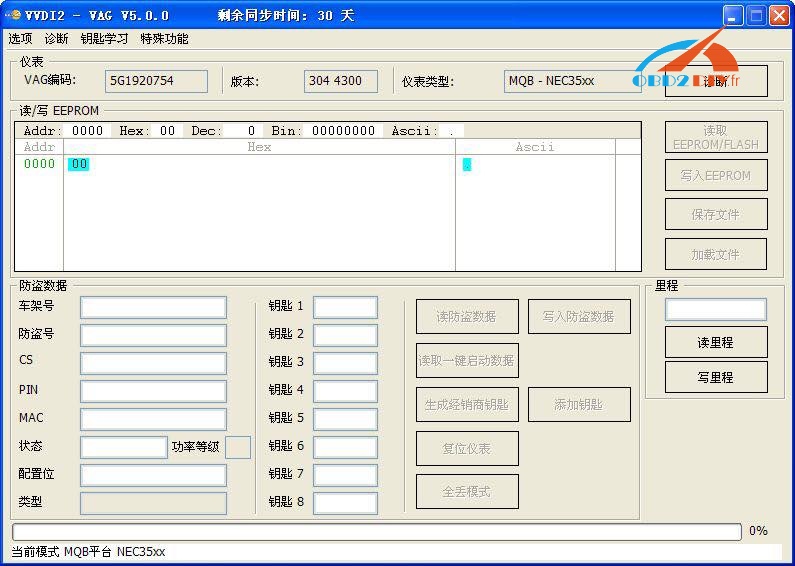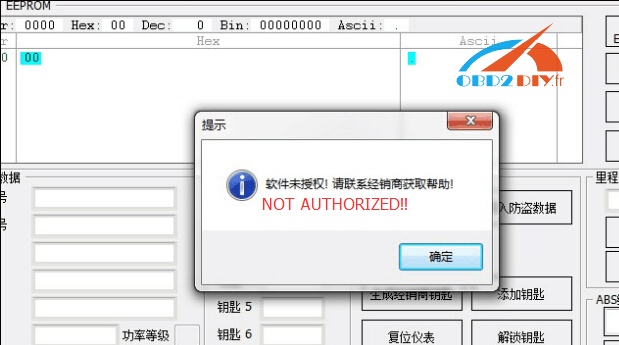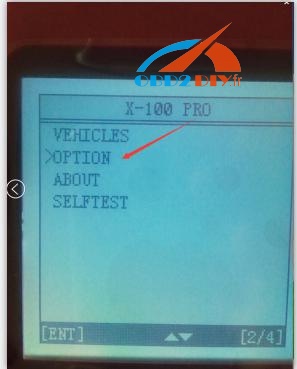Xhorse VVDI2 5.0.0 is said to be used for VAG MQB NEC35xx, for immoblizer/odometer correction? Is it true?
This is VVDI2 VAG V5.0.0 released note:
Add support for MQB NEC35xx immoblizer/KM function, support following cars:
Audi A3/S3 2014+
Audi Q2
VW Golf7
VW Polo(MQB)
VW Tiguan II
VW Touran II
VW crafter 2017+
VW Passat B8 without virtual cockpit
Skoda Octavia III 2014.07+
Skoda Rapid 2015.06+
Skoda Kodiaq
Skoda Superb III
Seat Ibiza/Ateca/Toledo 2015.06+
Attention 1: This type only support cars with cluster Continental/VDO. JCI type and virtual cockpit was not includ
Attention 2: MQB Immobilizer function require MQB key made by VVDI2
2. Bugfix
VVDI2 5.0.0 download free: https://mega.nz/#!O8JznCBZ!ZkbVpRZYa0ZxzuZjg6OG961KUZkDt7EEMEuSA0Xzkuw
But actually, it is working or not?
See the procedure:



So, MQB authorisation is not available now.
VVDI2 CANNOT work for VAG MQB NEC35xx!
Experts at obd2diy.fr had the test and confirmed it.
TEST Cluster MQB VDD 2014 and not Working

So, please wait for the MQB key support from Xhorse.
MQB keys are more important at this moment for Xhorse.
Xhorse will be the 1st in the world to launch that option.
Reference:
What is Volkswagen Group MQB platform?
(From Wikipedia, the free encyclopedia)
The Volkswagen Group MQB platform is the company’s strategy for shared modular construction of its transverse, front-engined, front-wheel drive (optional four-wheel drive) automobiles. Volkswagen spent roughly $60bn developing this new platform and cars built upon it. The platform underpins a wide range of cars from the supermini class to the full size SUV class. MQB allows Volkswagen to assemble any of its cars based on this platform across all of its MQB ready factories. This allows the Volkswagen group flexibility to shift production as needed between its different factories. Beginning in 2012, Volkswagen Group marketed the strategy under the code name MQB, which stands for Modularer Querbaukasten, translating from German to “Modular Transversal Toolkit” or “Modular Transverse Matrix”. MQB is one strategy within VW’s overall MB (Modularer Baukasten or modular matrix) program which also includes the similar MLB strategy for vehicles with longitudinal engine orientation.
MQB is not a platform as such, but, rather, a system for introducing rationality to different platforms that have transverse engines, regardless of model, vehicle size or brand. Thus MQB uses a core “matrix” of components across a wide variety of platforms — for example, sharing a common engine-mounting core for all drivetrains (e.g., gasoline, diesel, natural gas, hybrid and purely electric). As well as reducing weight, the concept allows different models to be manufactured at the same plant, further saving cost.
MQB-based models
MQB models may range from superminis to large family cars, replacing the current generations of models. The MQB architecture replaces the PQ25, PQ35 and PQ46 platforms.
All MQB cars will share the same front axle, pedal box and engine positioning, despite varying wheelbase, track and external dimensions.
Body styles: (1) 3-door hatchback (2) 4-door saloon (3) 5-door hatchback (4) 5-door coupe/liftback (sw) 5-door station wagon (c) convertible (r) roadster (mpv) 5-door MPV (x) 5-door SUV/Crossover (v) Panel van.
Current
Audi A3 Mk3 (1, 2, 3, c)
Audi TT Mk3 (r)
Audi Q2 (x)
SEAT Ibiza Mk5 (3)
SEAT León Mk3 (1, 3, sw, x)
SEAT Arona (x)
SEAT Ateca (x)
Škoda Octavia Mk3 (4, sw, x)
Škoda Superb B8 (4, sw)
Škoda Karoq (x)
Škoda Kodiaq (x)
Volkswagen Arteon (4)
Volkswagen Atlas / Teramont (x)
Volkswagen Golf Mk7 (1, 3, sw, x)
Volkswagen Golf Sportsvan (mpv)
Volkswagen Passat Mk8 (2, sw, x)
Volkswagen Polo Mk6 (3)
Volkswagen T-Roc (x)
Volkswagen Tiguan Mk2 (x)
Volkswagen Touran Mk2 (mpv)
Upcoming
Audi A1 Mk2 (3)
Audi Q3 Mk2 (x)
Volkswagen T-Cross (x)
Volkswagen Jetta Mk7 (2)




